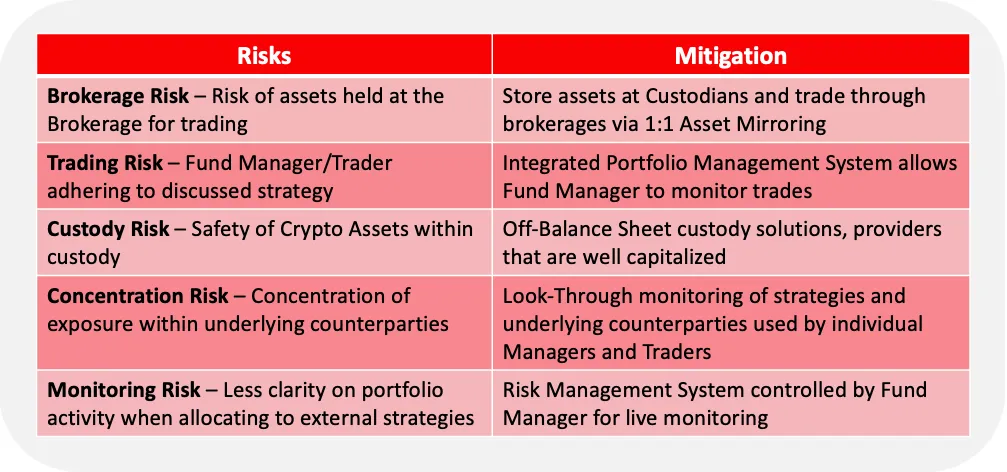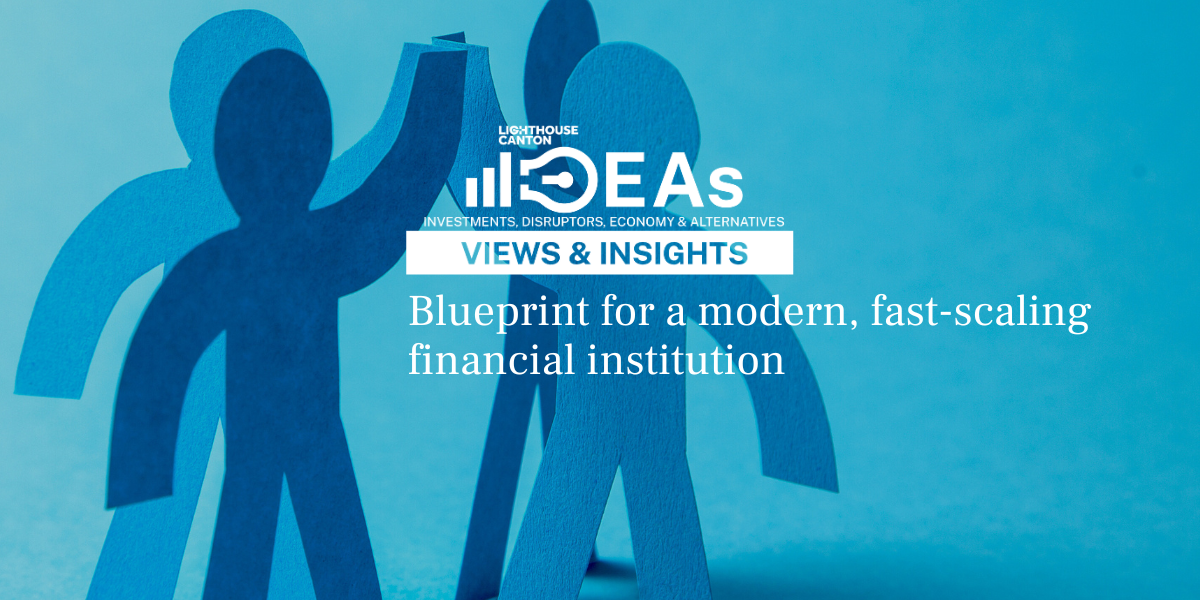Family offices in Asia are increasingly open to digital assets—but only when risk is clearly understood and tightly managed. While the headlines focus on volatility and token prices, the underlying concerns that hold back allocators are more structural: counterparty reliability, custody frameworks, and transparency over who holds what.
“One of the biggest risks is counterparty risk,” said Joshua Choo, Director of Wealth Advisory at Lighthouse Canton, in a conversation with Lighthouse Canton IDEAs: Views & Insights.
Crypto, unlike traditional finance, introduces new layers of friction. Allocators must not only trust the manager but also understand how digital custody, execution, and redemption interact—often across multiple jurisdictions and platforms. And that’s where the knowledge gap widens.
“Most of the family offices, if they like this strategy, don’t understand the risks,” Choo added. “There’s an educational route that has to be taken.”
THE EDUCATION GAP
To understand the risks, one must first understand how traditional and crypto-native investors view custody differently. “Traditional finance looks at how safe the custody technology is,” Choo explained. “But crypto-native players tend to look at how well-capitalised the custodian is—how capable they are to repay losses. They go back to the basics.”
This divergence in philosophy is particularly important in crypto, where custody is not just about who holds the key, but also who takes the fall if things go wrong.
That’s why Lighthouse Canton adopts a “Custody-First” stance, focusing on the safety of our custody partners and solutions, before building trading, products and asset management around it. For example instead of directly doing custody and trading on an exchange, the goal is to separate custody and trading functions.
“We don’t give up ownership to the exchange,” said Choo. “We pay a fee to maintain that safety.”
Still, even with top-tier custodians, other structural risks remain. “The risk is also similar to FX risk, but in the crypto space it needs to be highlighted,” Choo said. “We take the market maker risk, we take the custodian risk, we take the structural risk.”
Stablecoin lending, another popular market-neutral strategy, carries its own technical vulnerabilities. “You take smart contract risk. It could get hacked,” Choo noted. “But that’s minor compared to the other risks.”
Most hacks, he added, occur not in smart contracts, but in custodians and exchanges. “They siphon money. It’s about infrastructure risk,” he said. For many allocators used to the clean-cut trust structures of private equity or real estate, this is unfamiliar terrain.
HOW IS LIGHTHOUSE CANTON ADDRESSING THESE RISKS
To mitigate these risks, Lighthouse Canton aims for a multi-manager approach, as opposed to the typical hedge fund or fund-of-fund model—starting with control. “Normally in hedge fund allocation, you send the money to the fund, and they do their own custody, brokerage, and risk management,” said Choo.
Instead Lighthouse Canton flips the model, to make it more secure. “We in-house handle the client due diligence, order placement and risk monitoring and our brokers handle the order execution, custody and settlement,” noted Choo.
We monitor exposure daily,” he added. “We don’t rely on monthly due diligence calls only.”
In effect, Lighthouse Canton offers the investor a front-row seat into the portfolio engine—without sacrificing control or security. “All assets are stored with the custodians instead of exchanges to minimise exchange platform risks. Through asset mirroring, exchanges record assets stored with the custodians, in which then delegate to traders accordingly. If something looks off, we can cancel trading rights in real-time,” Choo added.

Across the industry, and even within the firm, this infrastructure is relatively new. “It’s something we’ve been building up internally and with Penjing Asset Management, an alternative asset management firm in Hong Kong specialising in hedge fund investments for almost 20 years” Choo noted. “There are not many experts in this space, and we’ve been working with expert partners on this structure to make crypto safer.”
WHY CRYPTO IN 2025
For many allocators, 2025 marks a turning point. Market volatility in equities and macro uncertainty have left traditional portfolios under pressure, while regulatory momentum—especially in the US and Asia—is making crypto more credible.
“We’re seeing more openness from single-family offices this year to take a fresh look at Bitcoin,” Choo said. “Conversations start with curiosity around price exposure but quickly shift when we explain what else is possible—market-neutral strategies, regulated custody, risk-managed portfolios.”
For Lighthouse Canton working in the crypto space, regulated structures—and transparent communication—matter. “It’s best to work with somebody who’s regulated and has reputational risk,” Choo advised. “Even if the fund is structured traditionally, you still need to look one level down.”
BUILDING THE BOOK
For Lighthouse Canton, the goal isn’t to eliminate crypto risk—that’s impossible—but to de-risk it into something institutional investors can understand and act on.
“Crypto will always carry risk,” he said. “But if you apply the right frameworks—daily monitoring, separation of trading rights, regulated custodians—you can bring it into a family office portfolio with the same discipline you’d expect in private credit or hedge funds.”
In Lighthouse Canton’s model, the typical return on these crypto market-neutral portfolios ranges from 6% to 8% annually in unfavourable conditions, with upside in the 20% to 30% range during favourable conditions. “They can take some illiquidity, but don’t like to see risk,” Choo said. “That’s the family office sweet spot.”
As crypto matures, the real differentiator may not be who has access to tokens—but who builds the trust infrastructure around them.














.png)
%20(9).webp)
.webp)
